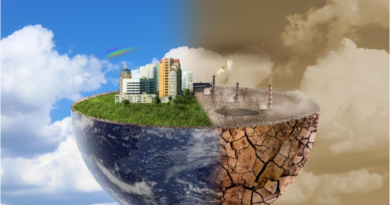How do trees Help the Environment?
Unveiling the Environmental Superpowers of Trees
Step into the enchanted world of trees, where majestic giants are quietly saving the planet. In this article, we will uncover the remarkable environmental superpowers of trees and how they play a vital role in sustaining life on Earth. With their ability to absorb carbon dioxide and release oxygen, trees act as powerful natural air purifiers, combating climate change and improving air quality. But their contributions don’t stop there. These green guardians also help prevent soil erosion, filter water, provide habitat for wildlife, and reduce noise pollution. In fact, studies have shown that spending time in nature, among trees, can improve mental health and overall well-being. Join us as we dive into the fascinating world of these silent superheroes, and discover the numerous ways they are silently working their magic. Get ready to be amazed by the incredible environmental superpowers of trees.
The importance of trees in the environment
Trees are not just beautiful ornaments that dot our landscapes; they are essential for the survival of life on Earth. These towering organisms have been around for millions of years, silently working their magic. Trees provide us with so much more than just shade. They are the lungs of the planet, producing oxygen and absorbing carbon dioxide through the process of photosynthesis. This crucial exchange of gases helps maintain a balance in our atmosphere, mitigating the impact of climate change. Furthermore, trees play a significant role in maintaining the water cycle by regulating rainfall patterns, reducing the risk of floods, and ensuring a consistent supply of clean water.
In addition to their role in the carbon and water cycles, trees also contribute to the overall health of our planet. Their extensive root systems help prevent soil erosion, holding the ground together and reducing the risk of landslides. Trees act as natural filters, purifying water as it passes through their roots and into the groundwater. They provide habitat and food for countless species, supporting biodiversity and wildlife conservation. Moreover, trees have a calming effect on our urban environments, reducing noise pollution and providing a sanctuary for both humans and animals. By understanding the importance of trees in our environment, we can appreciate the vital role they play in creating a greener future.
Environmental benefits of trees
Trees as Natural Air Purifiers
One of the most significant environmental superpowers of trees is their ability to act as natural air purifiers. Through the process of photosynthesis, trees absorb carbon dioxide, a greenhouse gas responsible for climate change, and release oxygen into the atmosphere. This process not only helps combat global warming but also improves air quality by reducing the levels of harmful pollutants. In urban areas, where air pollution is a growing concern, trees play a crucial role in filtering out pollutants and providing clean and breathable air for the community. Their leaves act as miniature air filters, trapping particles and absorbing pollutants such as nitrogen dioxide, ozone, and particulate matter.
Trees and Their Role in Combating Climate Change
In the battle against climate change, trees are unsung heroes. As carbon dioxide levels continue to rise, trees help mitigate the impact by absorbing and storing carbon in their trunks, branches, leaves, and roots. This process, known as carbon sequestration, helps reduce the amount of greenhouse gases in the atmosphere, thereby slowing down the rate of global warming. In fact, studies have shown that forests can absorb up to 30% of the carbon dioxide emitted by human activities. By preserving existing forests and planting new trees, we can enhance their capacity to sequester carbon and combat climate change.
The Impact of Deforestation on the Environment
While trees are powerful allies in the fight against climate change, deforestation poses a significant threat to their existence and the health of our planet. The clearing of forests for agriculture, logging, urban development, and other human activities leads to the loss of vital habitats, increases carbon emissions, disrupts rainfall patterns, and contributes to soil erosion. Deforestation not only threatens the survival of countless plant and animal species but also exacerbates the effects of climate change. It is essential to recognize the value of our forests and take proactive measures to protect and restore them.
Trees as natural air purifiers
In recent years, tree planting initiatives have gained momentum as a response to the challenges posed by climate change and deforestation. Governments, organizations, and individuals around the world have recognized the importance of trees and are taking action to restore and expand forest cover. These initiatives involve planting trees in urban areas, reforesting degraded landscapes, and creating new forest reserves. Tree planting not only helps combat climate change by sequestering carbon but also provides numerous other benefits. It helps restore biodiversity, improve soil quality, conserve water resources, and enhance the overall well-being of communities. By participating in tree planting initiatives and supporting reforestation efforts, we can all contribute to creating a greener and more sustainable future.
Trees and their role in combating climate change
Trees are vital for maintaining biodiversity and supporting wildlife conservation. Forests provide habitats for countless species, from insects and birds to mammals and reptiles. The diverse range of trees within a forest ecosystem creates a complex web of relationships, where each species relies on others for survival. Trees provide food, shelter, and nesting sites for a variety of animals, ensuring their continued existence. By protecting and preserving forests, we can safeguard these habitats and help prevent the extinction of species. Additionally, the presence of trees in urban areas can attract birds, butterflies, and other wildlife, bringing a touch of nature into our cities and enhancing our quality of life.
The impact of deforestation on the environment
As the world becomes increasingly urbanized, the importance of trees in urban areas cannot be overstated. Urban forestry focuses on managing and preserving trees in cities to maximize their environmental, social, and economic benefits. Trees in urban areas help reduce the urban heat island effect by providing shade and cooling the surrounding environment. They also improve air quality by absorbing pollutants and releasing oxygen. Furthermore, trees in cities have been shown to enhance mental health, reduce stress, and promote physical well-being. Urban forestry initiatives aim to create sustainable and livable cities by integrating trees into urban planning, improving green spaces, and encouraging community engagement.
Tree planting initiatives and their significance
Apart from their environmental and social benefits, trees also have significant economic value. The timber industry relies on trees for the production of wood products, creating jobs and contributing to local economies. Trees also have a positive impact on property values, with studies showing that homes with mature trees have higher market prices. Furthermore, trees provide shade, reducing the need for air conditioning and saving energy costs. In urban areas, well-maintained trees can attract visitors, boost tourism, and support local businesses. By recognizing the economic value of trees, we can advocate for their preservation and ensure sustainable management practices.
How trees support biodiversity and wildlife conservation
The environmental superpowers of trees are awe-inspiring. From purifying the air we breathe to combating climate change, preventing soil erosion, supporting wildlife, and enhancing our well-being, trees play a crucial role in creating a greener future. It is essential that we recognize their value and take action to protect, restore, and plant more trees. Whether through participating in tree planting initiatives, supporting reforestation efforts, or advocating for sustainable urban forestry, each of us can contribute to the preservation of our silent superheroes. By harnessing the power of trees, we can build a world where nature thrives, and future generations can enjoy the countless benefits that trees provide. So let’s join hands and become the green guardians our planet needs. Together, we can make a difference.
The economic value of trees
Trees are not only beautiful to look at, but they also support a wide range of biodiversity and play a crucial role in wildlife conservation. In their vast canopies, trees provide shelter, nesting sites, and food sources for a variety of animals. Birds, for instance, build their nests in the branches, while squirrels and other small mammals find refuge in tree hollows. Additionally, trees produce fruits, nuts, and seeds that serve as a vital food source for many creatures, including insects, birds, and mammals.
Furthermore, trees create a network of interconnected habitats, allowing animals to move freely and find suitable environments for breeding and foraging. This connectivity is essential for the survival of numerous species, especially those with large home ranges or migratory patterns. By preserving forests and planting new trees, we can help protect and restore these habitats, ensuring the survival of countless plant and animal species.
Moreover, the presence of trees in urban areas can significantly enhance biodiversity. Urban forests act as green oases, attracting birds, insects, and other wildlife, even in the midst of concrete jungles. By incorporating green spaces and planting trees in cities, we can create havens for biodiversity and promote a healthier, more balanced ecosystem. It is essential to recognize the vital role that trees play in supporting biodiversity and wildlife conservation, as they are key players in maintaining the delicate web of life on our planet.
Conclusion:
Urban forestry is a branch of forestry that focuses on the management, conservation, and cultivation of trees in urban environments. It plays a crucial role in creating sustainable cities and improving the quality of life for urban dwellers. One of the primary benefits of urban forestry is its ability to mitigate the effects of climate change. Trees in cities act as carbon sinks, absorbing carbon dioxide and other harmful greenhouse gases, thereby reducing the carbon footprint of urban areas. This not only helps combat climate change but also improves air quality and reduces the risk of respiratory diseases.
Furthermore, urban trees provide shade, reducing the urban heat island effect and helping to regulate temperatures. This is especially crucial in densely populated areas where concrete and asphalt can trap heat and make cities much hotter than surrounding rural areas. By strategically planting trees in urban areas, we can create cooler, more comfortable environments for residents, reducing the need for excessive air conditioning and energy consumption.
Additionally, urban forests offer a range of social and economic benefits. Trees in urban areas have been shown to improve mental health and well-being, reduce stress levels, and increase community engagement. They also enhance the aesthetic appeal of cities, making them more attractive and livable. Moreover, urban green spaces, such as parks and tree-lined streets, contribute to increased property values and attract businesses and tourism, ultimately boosting the local economy.
In conclusion, urban forestry is a powerful tool for creating sustainable cities that are resilient to climate change and provide a high quality of life for residents. By recognizing the value of trees and integrating them into urban planning and development, we can harness their environmental, social, and economic benefits, making our cities greener, healthier, and more vibrant.



